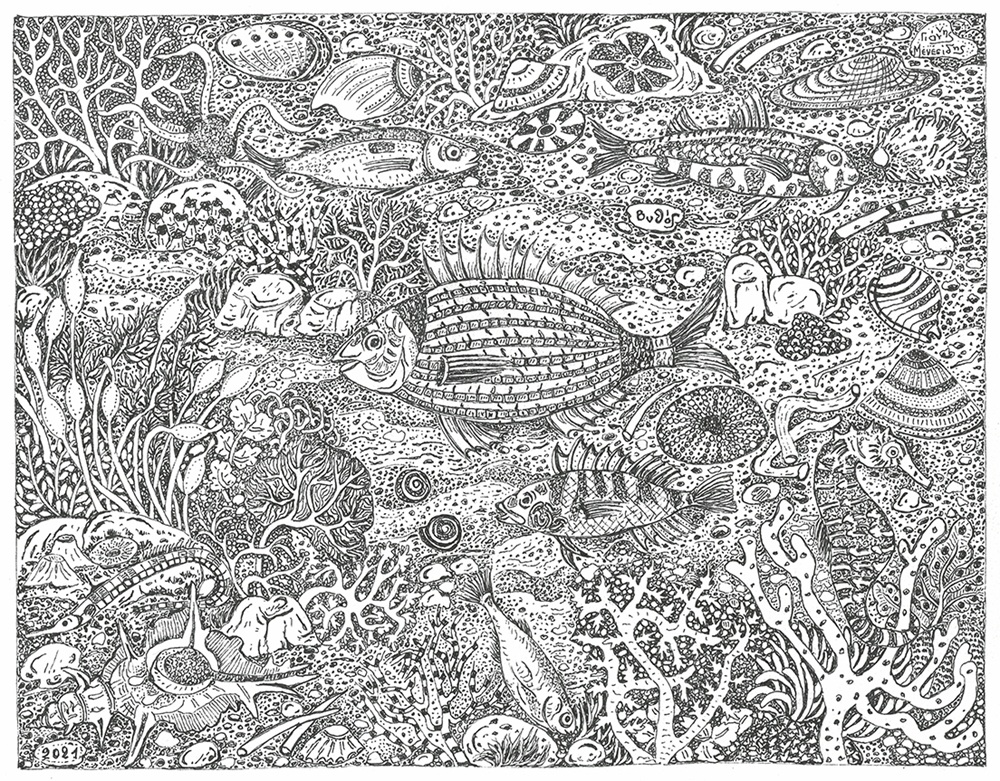
“I parallel my painting with the pomegranate tree that conveys notions of hidden joy. I sweeten, lose myself and decompose on the painting surface. I wear borrowed clothes, scatter and become multiform. I toil, I get frustrated, my surface when illuminated for free, I hyperventilate…”. With these words the painter Yannis Menesidis describes his creations, who is hosted in the new exhibition organized by the Teloglion Fine Arts Foundation of the Aristotle University of Thessaloniki.
The exhibition presents 46 works of the artist from the last two decades, entitled “Yannis Menesidis: The painter of “hidden” joy” and will be inaugurated on Wednesday 7 May 2025, at 19:00, at Teloglion (159A Agios Dimitriou St. Demetriou).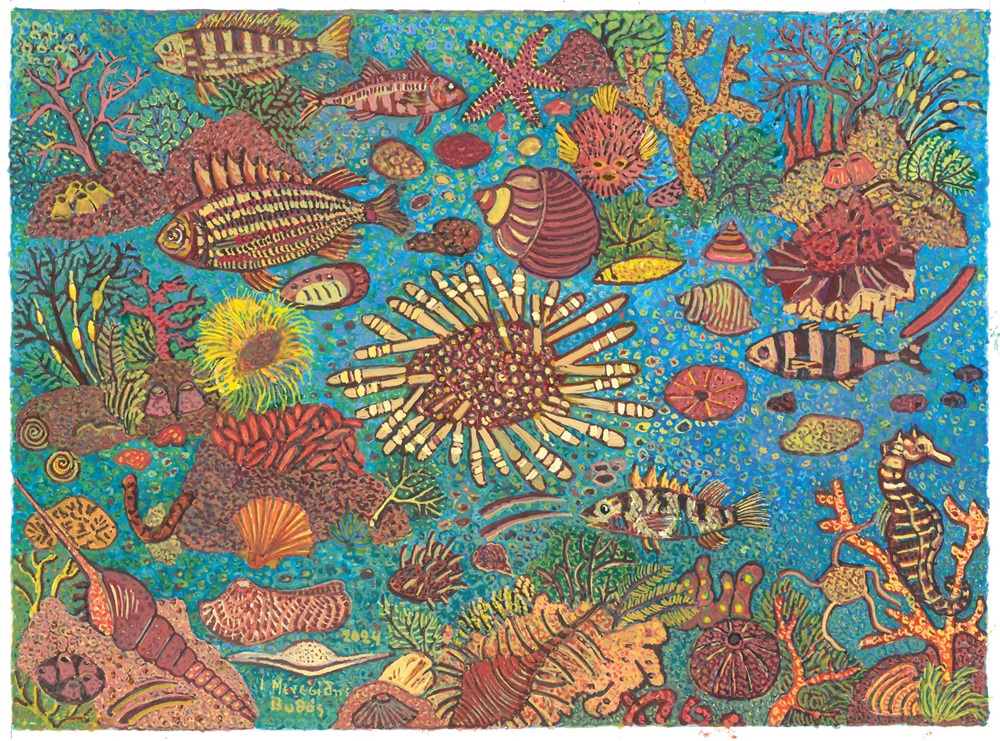
His works in ink, tempera and oil pastels are characterized by the multiplication of patterns, the charm of the surface and the shaping of forms. Man occupies a central place in his art, whether religious or popular subjects. At the same time, nature appears constantly as a theme: in the imposing presence of trees (plane trees, beech trees, olive trees, pine trees), in the vegetation and birds, in the sea bed, in the water element and in the landscapes (Samos, the rocks of Cappadocia, the gorge of Vikos, Fira in Santorini, the desert of Jordan, etc.).
Miguel Fernández Belmonte, Art Historian and Curator of the Telloglio, notes that “in Menesidis’ works, whether they are landscapes, religious or popular themes (bazaars, festivals), there is always man, both as a figure and as a symbol. It is an art detached from naturalistic representation, spiritual and symbolic that is not confined to a strict methodology or formula. It is an art that allows for self-knowledge and exploration, full of diffused joy, peace and hope. One can observe in his painting a parallel expansion in relation to the brushstroke. In his early color works, the brushstrokes are small, round and linear, composing successive layers that thicken and create depth. In his later decades, his color is composed of large areas that create greater contrasts. At the same time, it is important in these paintings to achieve a diffuse and balanced intensity without excess, an effect to which the lack of light shading contributes.” Also, referring to the exhibition Menesidis, who also curated the exhibition, he notes that “in the other large body of his artistic production, the black and white works in ink, the whole surface acquires a special dynamic mainly in two directions. One concerns the densities of the lines that “weave” the shadows and the white surfaces that make up the “illuminations”. The other concerns the partitioning of the forms into individual shapes – forms. This proliferation of patterns and the contrasts of black and white activate, despite the lack of linear perspective, the two-dimensional surface and evoke a sense of depth. Also characteristic are the small dimensions of his works, the changes of scale (what is considered most important is depicted at a larger size) and the schematization of the figures that contributes to the homogeneity of the painted surface.”
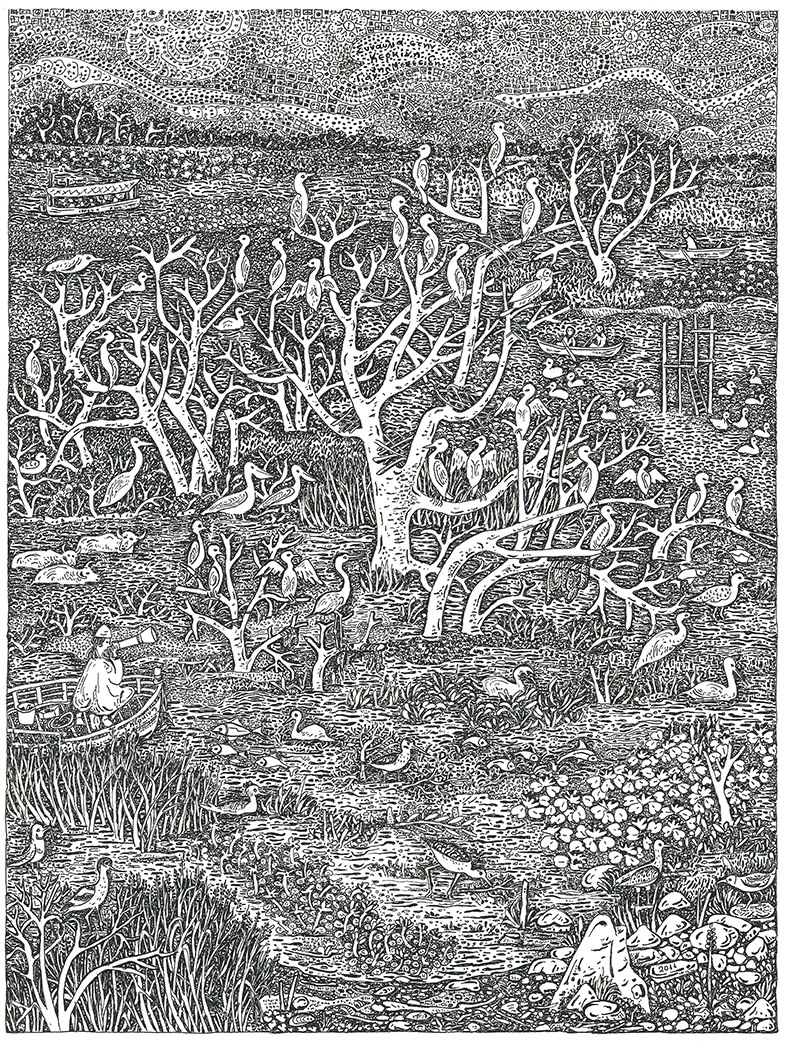
Alexandra Goulaki-Boutyra, Professor Emeritus of the Aristotle University of Thessaloniki and General Director of the Telloglio Foundation, speaking about Menesidis and the new exhibition hosted in the museum’s exhibition space, emphasizes that “with unimaginable patience and diligence, he initially works on his miniature drawings in ink: He creates arabesques that seem to need a magnifying glass to bring out the fine details, to read complexities and symbols. His subjects, mostly religious, contain cryptic texts that simultaneously function as visuals in the painting composition. The painting surface is suffocatingly filled -without a gap- by repetitive geometric motifs, moments, which weave a canvas on which the subject develops. For the composition, usually two-dimensional, he chooses various perspectives, from above, from below, from below, avoiding perspective. Having lived in urban centres for short or long periods (Drama, Thessaloniki, Kavala, Xanthi, Thassos, Samos, Chalkidiki), he moves between real space and its dreamy side, between angels, saints’ lives, religious festivals, fairs, small shops”.
Mrs.Goulaki-Voutyra also stresses that the exhibition of Menesidis at Teloglion also functions “as a reference and honour to the teacher Pentzikis, introducing us to the space of the Christianopoulos’ Diagonios, with which Menesidis collaborated for 20 years (1975-1995) and which will be part of the tribute to the visual history of Thessaloniki in the context of the celebration of the 25th anniversary of the Teloglion Foundation”.
Useful Information:
Opening Night: Wednesday 7 May 2025, at 19:00
Exhibition Duration: 7 May – 28 September 2025
Days and Hours
Tuesday, Thursday, Friday 9:00-14:00, Wednesday 9:00-14:00 & 17:00-21:00,
Saturdays and Sundays 10:00-18:00,
Mondays closed

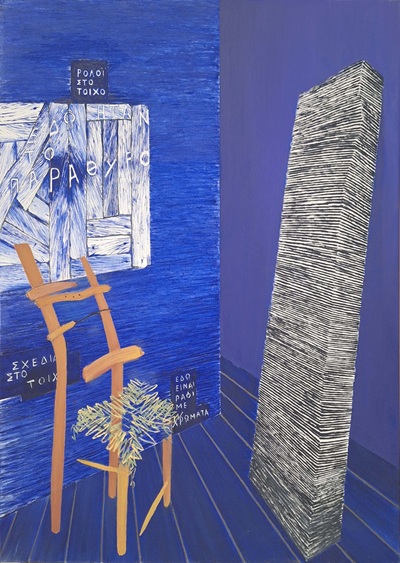
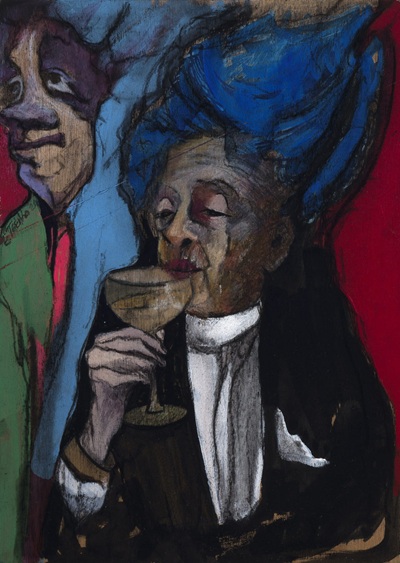

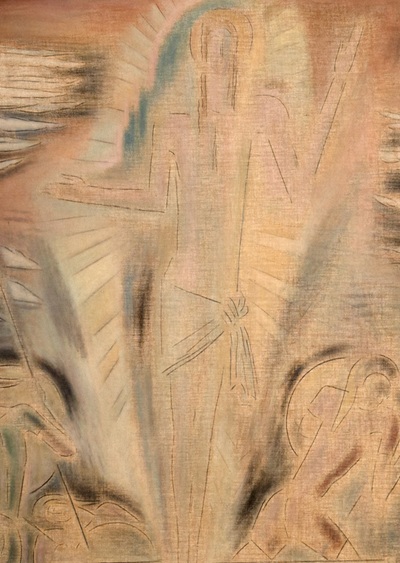


Leave A Comment